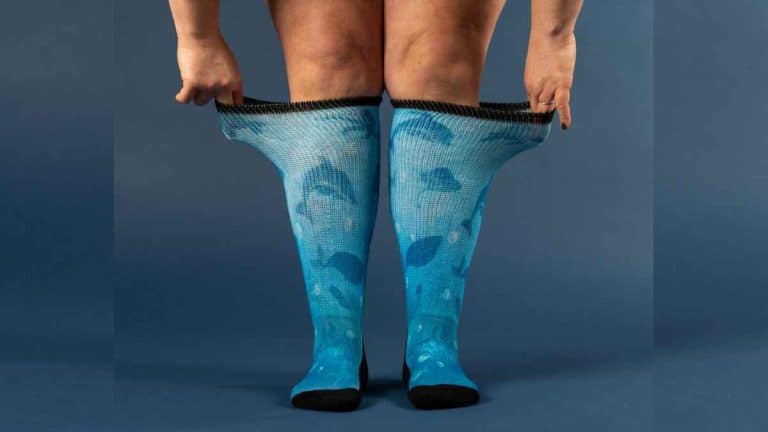Living with diabetes requires special attention to foot health. High blood sugar levels can lead to complications that significantly impact the feet. Understanding these issues is crucial for proper care and management. Taking proactive steps and seeking appropriate medical guidance can minimize the risks associated with diabetic foot problems.
Contents
Diabetic Foot Complications:
1. Nerve Damage (Diabetic Neuropathy):
Diabetes can cause nerve damage, leading to numbness, tingling, or foot pain. This loss of sensation increases the risk of unnoticed injuries and foot complications.
2. Reduced Sensation:
High blood sugar levels can reduce your ability to feel hot & cold temperatures and pain in your feet. This may result in difficulty noticing minor injuries, which can escalate into more serious problems if left untreated.
3. Foot Ulcers:
Nerve damage and poor blood circulation can lead to foot ulcers. These ulcers may not heal properly and can become infected if not addressed promptly.
4. Peripheral Arterial Disease (PAD):
Diabetes can affect blood circulation to the feet and legs, resulting in poor circulation. Reduced blood flow impairs the body’s ability to heal wounds and increases the risk of infection.
5. Calluses and Corns:
Diabetes can cause the skin to become dry and callused, leading to the development of corns. Calluses and corns can increase pressure on the feet and potentially result in ulcers.
6. Fungal Infections:
High blood sugar levels can create a favorable environment for fungal growth, leading to infections such as athlete’s foot. Fungal infections can cause itching, redness, and skin breakdown.
7. Charcot Foot:
A rare condition associated with diabetes, Charcot foot causes the weakening of the bones in the foot, leading to fractures, deformities, and instability.
8. Amputation Risk:
The combination of nerve damage, poor circulation, and foot ulcers puts individuals with diabetes at a higher risk of requiring lower limb amputation if proper care and treatment are not implemented.
Taking Action:
1. Daily Foot Checks:
Examine your feet for any changes, including cuts, sores, redness, swelling, or blisters. Seek medical attention for any concerning foot issues.
2. Proper Foot Cleaning:
It is recommended to wash your feet every day with warm water and mild soap. Be sure to dry your feet well, including between the toes.
3. Moisturize Regularly:
Apply moisturizer to your feet to prevent dryness and cracking. Avoid applying lotion between the toes to prevent moisture buildup.
4. Nail Care:
Trim your toenails straight across and file the edges gently. If you face difficulty reaching or seeing your feet, seek professional assistance for nail care.
5. Avoid Self-Treatment:
Do not attempt to remove calluses or corns on your own. Consult a healthcare professional or foot specialist for proper treatment.
6. Regular Check-ups:
It is important to schedule regular appointments with your healthcare professional and foot specialist for comprehensive foot examinations. These exams help monitor foot health and detect any issues early on.
7. Maintain Blood Sugar Control:
Keep your blood sugar levels within the recommended range. Proper blood sugar control reduces the risk of complications, including diabetic foot problems.
8. Stay Active:
Engage in regular physical activity, such as Yoga, walking or swimming, as recommended by your healthcare provider. Regular exercise promotes circulation and helps maintain overall foot health.
9. Wearing Diabetic Socks:
Choosing suitable diabetic socks is crucial for preventing foot complications. Choose non-constricting socks that provide adequate support, cushioning, and a proper fit. Diabetic socks can be a valuable addition to your foot care routine, as they promote comfort, reduce pressure points, and enhance circulation.
10. Maintain a Healthy Weight:
Achieving and maintaining a healthy weight can help reduce the pressure on your feet and lower the risk of developing foot problems. A balanced diet and regular physical activity can contribute to weight management and overall health.
11. Smoking Cessation:
Smoking restricts blood flow and impairs circulation, which can exacerbate foot complications. Quitting smoking is beneficial for both your general health and foot health.
12. Educate Yourself:
Take the time to learn more about diabetic foot care. Stay informed about warning signs, preventive measures, and when to seek medical attention. Knowledge empowers you to take proactive steps in managing your foot health.
Diabetic foot problems require diligent care and attention to maintain optimal foot health. By understanding the potential complications associated with diabetes, adopting preventive measures, and seeking appropriate medical guidance, you can reduce the risk of foot-related complications. Regular foot checks, proper hygiene, suitable footwear choices, and professional medical care are vital to managing and minimizing the impact of diabetic foot issues. Prioritizing foot health alongside comprehensive diabetes management contributes to overall well-being and an active, comfortable lifestyle.

